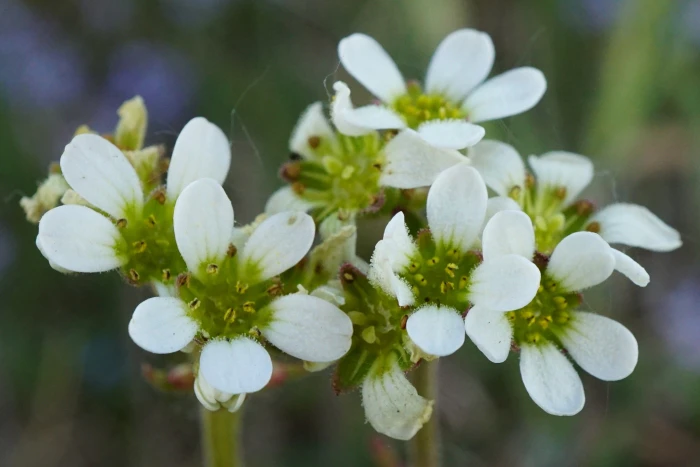Bulblet Saxifrage
(Saxifraga bulbifera)
Bulblet Saxifrage (Saxifraga bulbifera)
/
/

Patrick Hacker
CC BY 4.0
Image By:
Patrick Hacker
Recorded By:
Copyright:
CC BY 4.0
Copyright Notice:
Photo by: Patrick Hacker | License Type: CC BY 4.0 | License URL: http://creativecommons.org/licenses/by/4.0/ | Rights Holder: Patrick Hacker | Publisher: iNaturalist | Date Created: 2021-05-01T18:25:25-07:00 |




















Estimated Native Range
Climate Requirements for South Bend, Indiana
| This Plant | Your Site | Plant Suitability for Your Location | ||
|---|---|---|---|---|
| • Precipitation | 32" - 55" | 39" | Aquatic | Aquatic |
| • High Temp. | 73°F - 82°F | 85°F | Your summer temperatures are normal for this plant. | Excellent |
| • Low Temp. | 24°F - 38°F | 16°F | Your winter temperatures may be too cold for this plant | Too cold |
This plant should grow very well at your location but requires an aquatic environment.
Summary
Saxifraga bulbifera, commonly known as Bulblet Saxifrage or Bud Saxifrage, is a perennial herb that is native to a variety of habitats across Europe and Western Asia, including moist rocky areas, alpine grasslands, and woodland clearings. It typically grows at a moderate rate to a height and width of 0.5-1 feet (0.15-0.3 meters). The plant features loose rosettes of green, spoon-shaped leaves and erect stems bearing small, star-shaped flowers that can be red, yellow, or sometimes white, blooming in the summer. The flowers are modest in size but can be quite showy when in large clusters. Additionally, this species is known for producing bulbils in the leaf axils, which can fall off and grow into new plants.
Bulblet Saxifrage is valued for its ability to thrive in rocky gardens and alpine settings, where its charming flowers and unique reproduction method add interest. It is often used in rockeries, borders, and as ground cover. This plant prefers consistently moist conditions but can tolerate periods of drought once established. It is adaptable to various soil types, including clay, loam, or sandy soils, provided they offer good drainage. While it enjoys full sun to part shade, in hotter climates, it benefits from some afternoon shade to prevent scorching. There are no major disease or pest issues, but it can be susceptible to root rot in overly wet conditions.CC BY-SA 4.0
Bulblet Saxifrage is valued for its ability to thrive in rocky gardens and alpine settings, where its charming flowers and unique reproduction method add interest. It is often used in rockeries, borders, and as ground cover. This plant prefers consistently moist conditions but can tolerate periods of drought once established. It is adaptable to various soil types, including clay, loam, or sandy soils, provided they offer good drainage. While it enjoys full sun to part shade, in hotter climates, it benefits from some afternoon shade to prevent scorching. There are no major disease or pest issues, but it can be susceptible to root rot in overly wet conditions.CC BY-SA 4.0
Plant Description
- Plant Type: Herb
- Height: 0.5-1 feet
- Width: 0.5-1 feet
- Growth Rate: Moderate
- Flower Color: Red, Yellow
- Flowering Season: Summer
- Leaf Retention: Deciduous
Growth Requirements
- Sun: Full Sun, Part Shade
- Water: Medium
- Drainage: Medium, Fast
Common Uses
Bee Garden, Border Plant, Low Maintenance, Rock Garden
Natural Habitat
Native to moist rocky areas, alpine grasslands, and woodland clearings across Europe and Western Asia
Other Names
Common Names: Bud Saxifrage
Scientific Names: Saxifraga bulbifera, Evaiezoa bulbifera, Saxifraga bulbifera f. reducta, Saxifraga bulbifera var. pseudogranulata, Saxifraga bulbifera var. veronicifolia, Saxifraga cernua var. vivipara, Saxifraga granulata, Saxifraga granulata subsp. russoi, Saxifraga granulata var. russii
GBIF Accepted Name: Saxifraga bulbifera